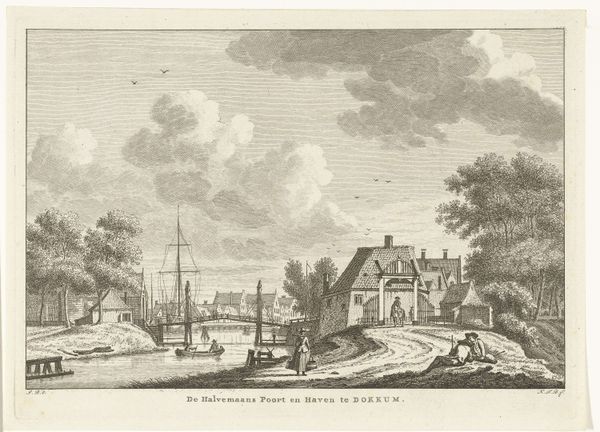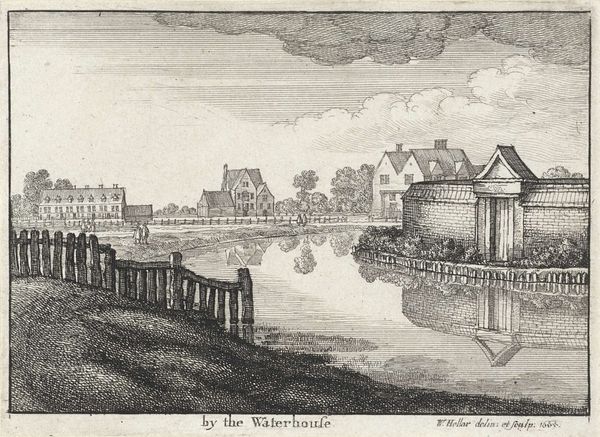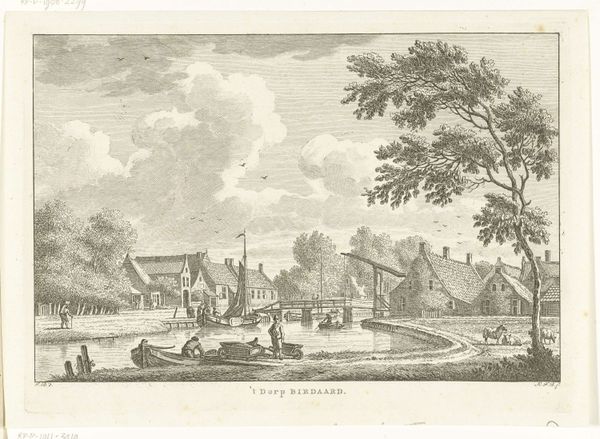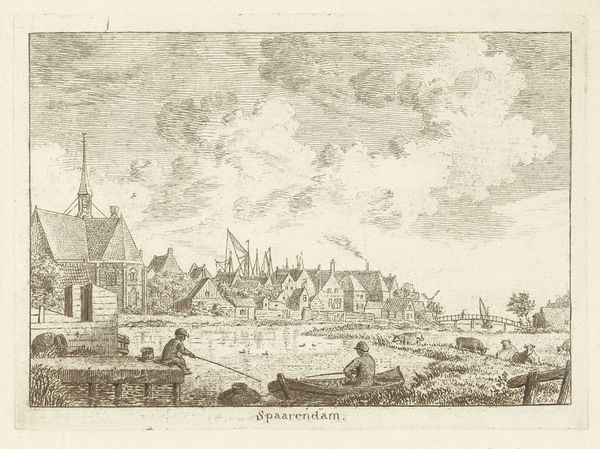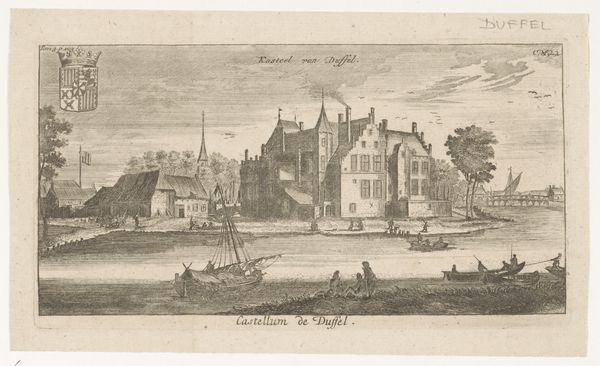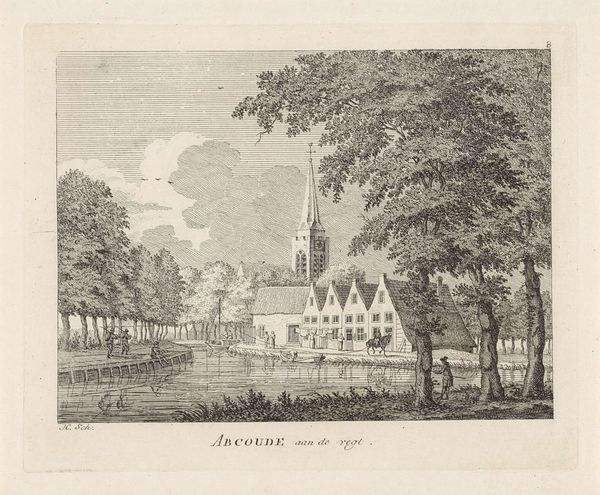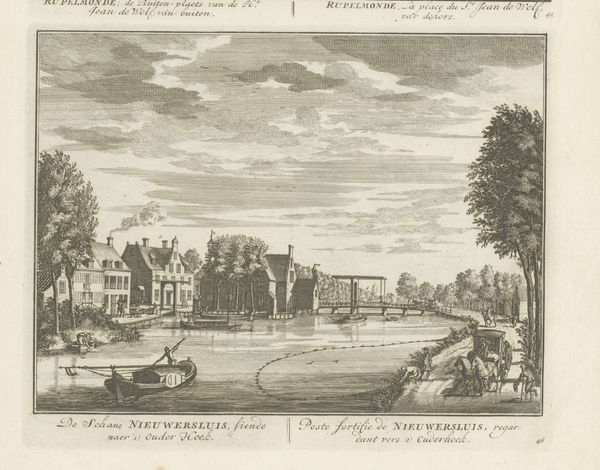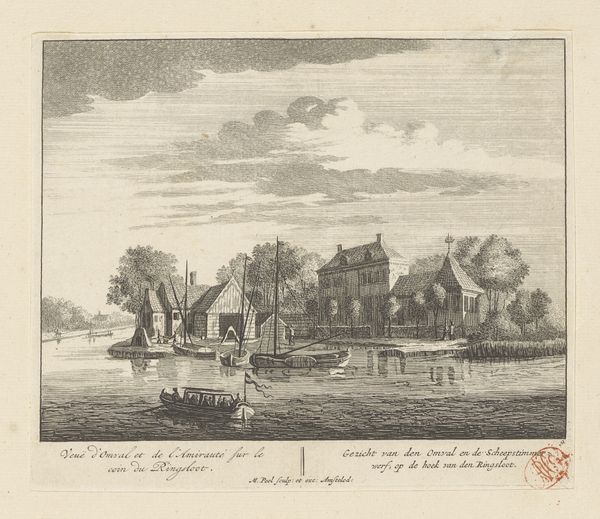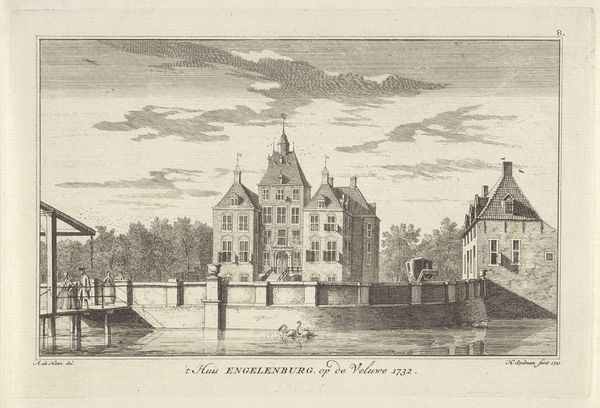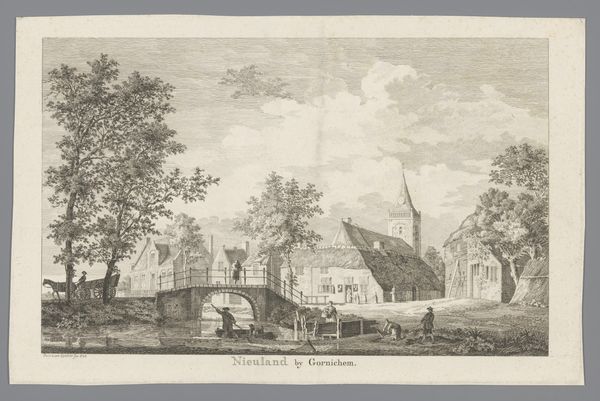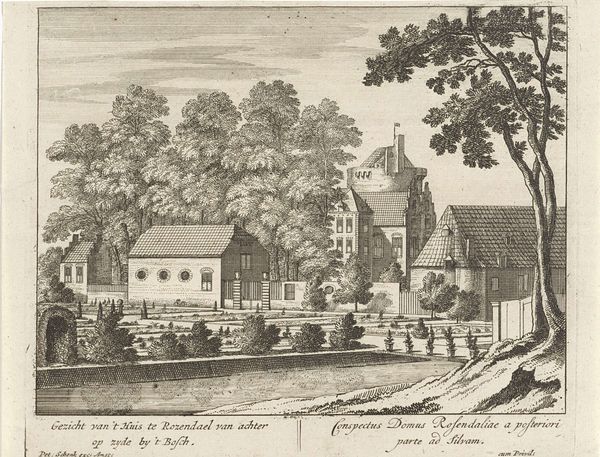
print, paper, ink, engraving
#
dutch-golden-age
# print
#
landscape
#
paper
#
ink
#
line
#
cityscape
#
engraving
Dimensions: height 80 mm, width 115 mm
Copyright: Rijks Museum: Open Domain
This print, *Gezicht op Nieuwersluis*, was made in 1670 by Abraham Rademaker using etching, a process that democratized image-making. An etcher covers a metal plate with wax, then scratches through it to expose the metal. Immersing the plate in acid eats away the exposed lines, creating grooves that hold ink. Here, the material directly influences the image’s graphic quality. Look closely at the artist’s skillful work. Rademaker varies the marks on the plate to create the illusion of light, shadow, and texture: from the sky full of thin etched lines, to the buildings made up of denser, cross-hatched marks. Etching allowed for multiple identical impressions to be made quickly, and relatively cheaply, in comparison to painting. This had huge implications for the development of visual culture, since this process allowed for the wide distribution of images, and access to art became more democratic. Understanding etching gives us a deeper appreciation of how art connects to wider issues of labor, politics, and consumption, challenging traditional distinctions between fine art and craft.
Comments
No comments
Be the first to comment and join the conversation on the ultimate creative platform.

